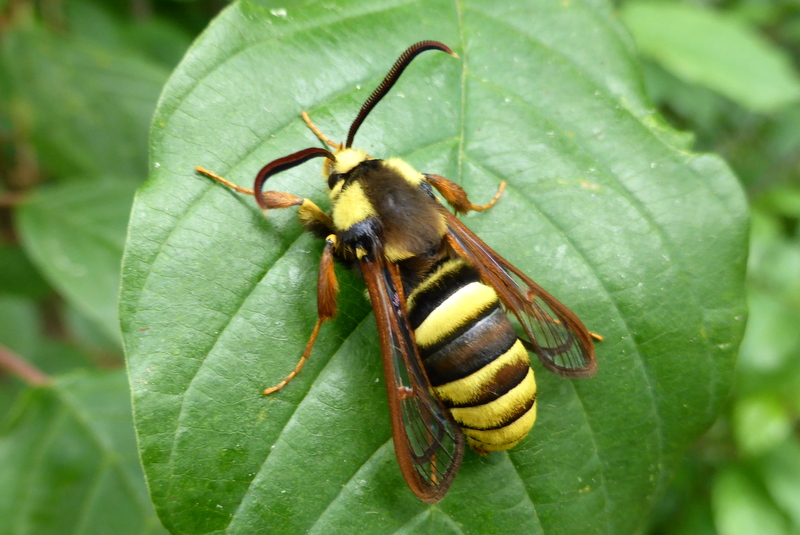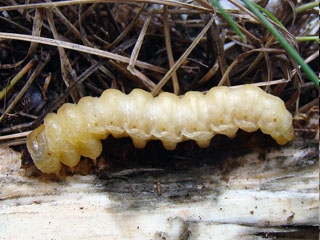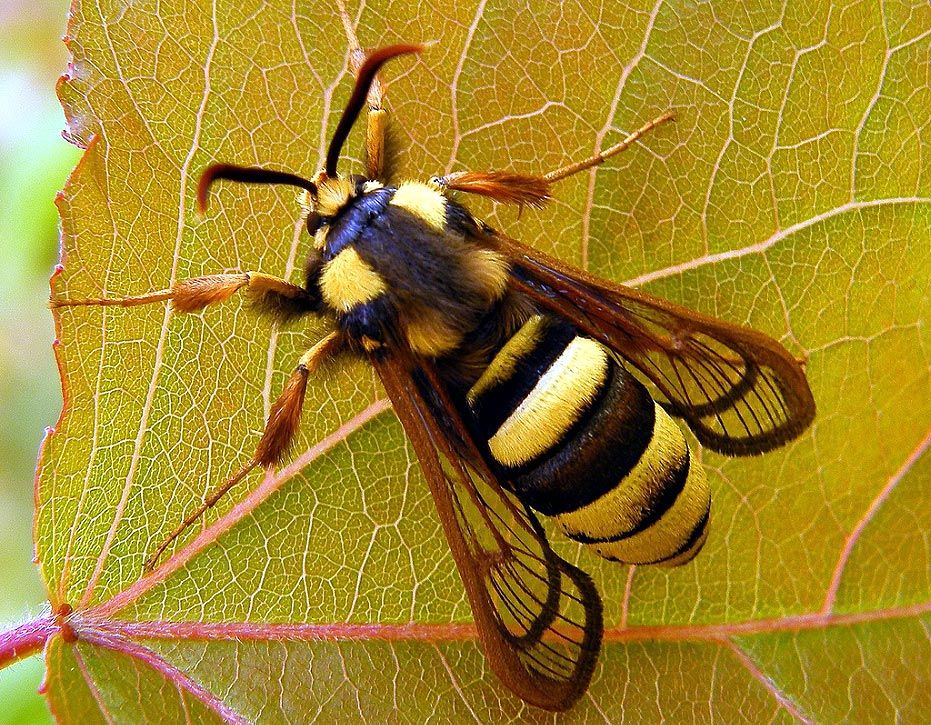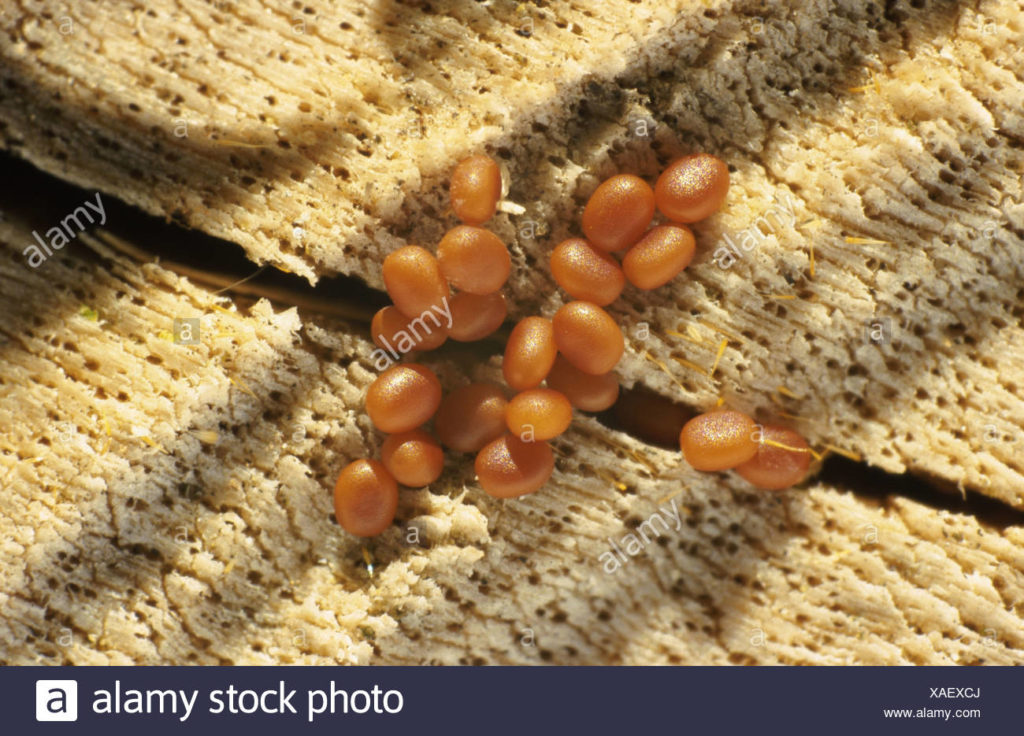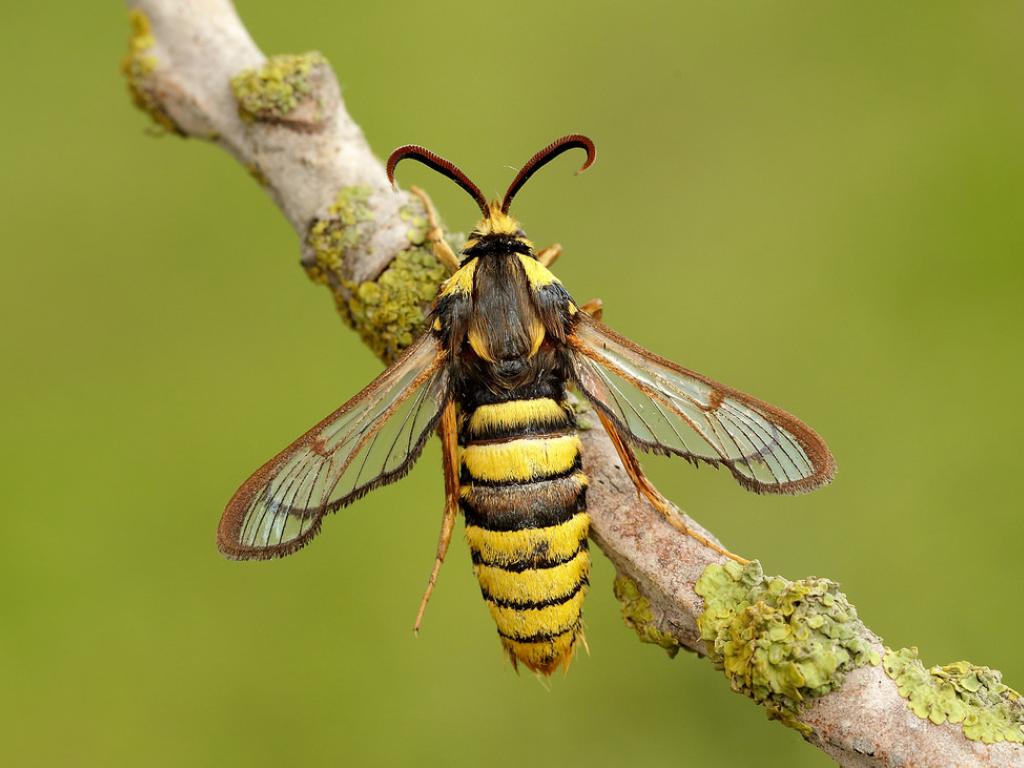Hornet Moth (Sesia apiformis)
Hornet moth, alternately called the hornet clearwing moth belonging to the clearwing moth family, is indigenous to the Middle East and Europe but has also been spotted in North America. They adapt the Batesian mimicry style, replicating the hornet’s appearance to look unappealing to their predators.
observation.org
Scientific Classification
- Family: Sesiidae
- Genus: Sesia
- Scientific Name: Sesia apiformis
Description and Identification
Caterpillar
The larval stage is long, lasting, between two and three years. They are primarily found in the host tree’s roots. Before entering the pupal phase, the larva bores up to 10 cm inside the trunk, covering the entrance with a thin bark to hide the tunnel. After getting in, it weaves a cocoon with the silk and the excavated material of the trees.
Adult Moth
Sexual Dimorphism: Present
Like the pupa, the females of the adult moths also appear larger than their male counterparts. Both sexes possess yellow and black stripes on their abdomens but vary in numbers, two in females and three in males.
Moreover, the females do not readily fly after emergence, but the males do, in search of their mate.
Color and Appearance
When opened, their forewings and hindwings appear clear and transparent without any scales. When closed, the pattern remains the same.
Average Wingspan: 3.4 – 4.2 cm
Flight Pattern: Consistent
Season: Not recorded
Quick Facts
| Distribution | Native: Europe, Middle East Invasive: Canada and America |
| Habitat | Golf courses, marshy regions, parks, fens, pits, pond edges |
| Predators | Birds like great tit, and magpie |
| Lifespan of Adults | Not recorded |
| Host Plants | Poplar species like aspen, and black poplar |
| Adult Diet | Nectar |
Did You Know
- The hornet moth’s species name had several synonyms by which it was referred to in different times in the past. Some of them include Sphinx apiformis, and Sphinx tenebrioniformis.
- There are several species, similar to the hornet moth, the lunar hornet moth being one of them. However, the latter is smaller and also has a black head alongside a yellow shoulder as its distinguishing features.
.
Scientific Classification
- Family: Sesiidae
- Genus: Sesia
- Scientific Name: Sesia apiformis

